 |
 |
 |
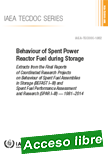 |
Behaviour of Spent Power Reactor Fuel during Storage
IAEA TECDOC No. 1862 | Date published: 2019 | 126 p.
This publication focuses on the storage of spent nuclear fuel from power reactors, which is a topic of increasing importance to Member States. To support their needs, the IAEA has carried out successive coordinated research projects (CRPs) on spent fuel performance and the behaviour of spent fuel assemblies in storage since the 1980s. The findings of these CRPs have been reported in a series of publications over the past 30 years. The current publication consolidates these findings and compiles all relevant information in one referenceable source.
|
The technical information provided in this publication will be particularly useful for experts engaged in safety assessments.
|
 |
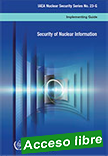 |
Security of Nuclear Information
Implementing Guides 23-G
This publication provides guidance on implementing the principle of confidentiality and on the broader aspects of information security (i.e. integrity and availability). It assists States in bridging the gap between existing government and industry standards on information security, the particular concepts and considerations that apply to nuclear security and the special provisions and conditions that exist when dealing with nuclear material and other radioactive material.
|
Specifically it seeks to assist States in the identification, classification, and assignment of appropriate security controls to information that could adversely impact nuclear security if compromised.
|
 |
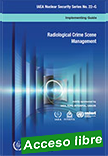 |
Radiological Crime Scene Management
Implementing Guides 22-G
The 38th edition of the annual Reference Data Series No. 1 contains estimates of energy, electricity and nuclear power trends up to the year 2050, using a variety of sources, such as the IAEA’s Power Reactor Information System and data prepared by the United Nations.
|
This publication focuses on the framework and functional elements for managing a radiological crime scene that are distinct from any other crime scene. It assumes that states have a capability for managing conventional crime scenes.
|
 |
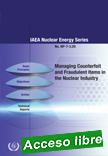 |
Managing Counterfeit and Fraudulent Items in the Nuclear Industry
IAEA Nuclear Energy Series NP-T-3.26 | STI/PUB/1817 | Date published: 2019 | 94 p.
Counterfeit and fraudulent items (CFls) are of increasing concern in the nuclear industry and generally throughout the industrial and commercial supply chains. Experience has shown that a lack of control of the processes involved in the sourcing, receipt, use and/or disposal of items can lead to the introduction of counterfeit or fraudulent items into a nuclear facility. |
This publication is designed to assist Member State organizations to prevent, detect and address CFIs on an ongoing basis. It provides users with recognized good practices for the introduction of a programme to effectively manage CFIs in the nuclear industry.
|
 |
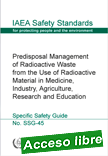 |
Predisposal Management of Radioactive Waste from the Use of Radioactive Material in Medicine, Industry, Agriculture, Research and Education
IAEA Safety Standards Series No. SSG-45. Date published: 2019. 112 p.
This Safety Guide is applicable to the predisposal management of radioactive waste derived from the use of radioactive materials in medicine, industry, agriculture, research and education, including disused sealed radioactive sources. It focuses on waste generated at facilities such as hospitals and research centres, where radioactive waste is not usually generated in bulk quantities. |
It covers the managerial, administrative and technical issues associated with the safe management of radioactive waste, from its generation to its acceptance at a disposal facility or its release from regulatory control.
|
 |
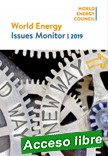 |
World Energy Issues Monitor 2019 | Managing the Grand Energy Transition
World Energy Council, Published February 2019
The World Energy Issues Monitor provides a snapshot of what keeps CEOs, Ministers and experts awake at night in nearly 90 countries. The monitor helps to define the world energy agenda and its evolution over time. It provides a high-level perception of what constitute issues of critical uncertainty, in contrast to those that require immediate action or act as developing signals for the future.
|
It is an essential tool for understanding the complex and uncertain environment in which energy leaders must operate, and a tool through which one can challenge one’s own assumptions on the key drivers within the energy landscape. This tenth iteration of the monitor is based on insights provided by nearly 2,300 energy leaders to provide 50 national assessments across six world regions. In addition to this report, the interactive online Issues Monitor tool allows the visualisation of the data that underpins the Issues Maps. This tool has been developed in collaboration with our Project Supporter ARUP.
|
 |
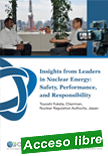 |
Insights from Leaders in Nuclear Energy: Safety, Performance, and Responsibility
OECD. Nuclear Energy Agency (NEA), English, published: January 2019
Insights from Leaders in Nuclear Energy shares personal insights through a series of in-depth conversations between the OECD Nuclear Energy Agency Director-General and leading figures in the sector. Each conversation explores the current issues and offers new ways to address challenges and aim for excellence.
In August 2018, NEA Director-General William D. Magwood, IV sat down with Toyoshi Fuketa, Chairman of the Japanese Nuclear Regulation Authority (NRA), for a wide-ranging discussion regarding nuclear safety issues in Japan. |
The conversation touches on the Tokyo Electronic Power Company (TEPCO) Fukushima Daiichi Nuclear Power Station accident, as well as ongoing challenges, Chairman Fuketa's perspective and insights and new directions for the NRA.
|
 |
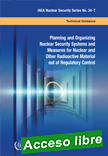 |
Planning and Organizing Nuclear Security Systems and Measures for Nuclear and Other Radioactive Material out of Regulatory Control
Technical Guidance. IAEA Nuclear Security Series No. 34-T| Date published: 2019
This publication provides guidance on the planning and organization of nuclear security systems and measures for the detection of criminal or intentional unauthorized acts involving nuclear and other radioactive material out of regulatory control (the detection architecture, as described in IAEA Nuclear Security Series No. 21) and for the response to potential nuclear security events (the response framework).
|
The guidance includes processes for reviewing the adequacy of existing nuclear security systems and measures, identifying gaps in capabilities and resources, and designing new systems and measures to address identified gaps.
|
 |
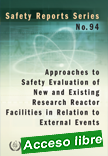 |
Approaches to Safety Evaluation of New and Existing Research Reactor Facilities in Relation to External Events
IAEA Safety Reports Series No. 94 |113 p. | Date published: 2019
This publication provides information and a framework for Member States to conduct realistic safety evaluation for research reactors in terms of external events. The publication provides information with examples on the use of a graded approach, based on the radiological hazard that a facility poses to the environment, public and workers, and takes into account the lessons from the Fukushima accident.
|
This publication supports the development of site specific guidelines for the actual design and safety assessment, and should be used in conjunction with the relevant IAEA Safety Standards. It can also be used as training material for research reactor staff and for a self-assessment of the vulnerability of existing structures to external events.
|
 |
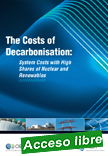 |
The Costs of Decarbonisation: System Costs with High Shares of Nuclear and Renewables
OECD. Nuclear Energy Agency. NEA No. 7299. Date published: 2019. 219 p.
This study sets out to assess the costs of alternative low-carbon electricity systems capable of achieving strict carbon emission reductions consistent with the aims of the Paris Agreement. It thus compares the total costs of six different scenarios of the electric power sector of a representative OECD country, all of which are consistent with a low-carbon constraint of only 50 gCO2 per kW, but which contain different shares of nuclear energy and renewable energies, in particular wind and solar photovoltaic (PV).
|
These shares vary between 0% and 75% of total electricity consumption
|
 |
| |
|
|

|
|
|
| |
|
|
| |
| |
|
|
| |
| |
|
|
| |
| |
|
|
|
